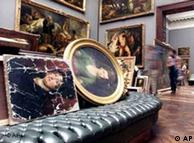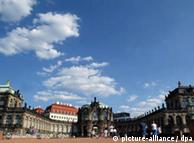Pritzker Prize Goes to Peter Zumthor
Published: April 12, 2009
He is not a celebrity architect, not one of the names that show up on shortlists for museums and concert hall projects or known beyond architecture circles. He hasn’t designed many buildings; the one he is best known for is a thermal spa in an Alpine commune. And he has toiled in relative obscurity for the last 30 years in a remote village in the Swiss mountains.
Skip to next paragraph 
Wolfram Janzer
Peter Zumthor’s art museum in Bregenz, Austria, has glass walls that can serve as billboards or video screens at night. More Photos »

Helene Binet
The interior of the St. Benedict Chapel, designed by Peter Zumthor, in Sumvitg, Switzerland. More Photos >
But on Monday the Swiss architect Peter Zumthor is to be named the winner of the 2009 Pritzker Prize, the highest recognition for architects.
“He has conceived his method of practice almost as carefully as each of his projects,” the citation from the nine-member Pritzker jury says. “He develops buildings of great integrity — untouched by fad or fashion. Declining a majority of the commissions that come his way, he only accepts a project if he feels a deep affinity for its program, and from the moment of commitment, his devotion is complete, overseeing the project’s realization to the very last detail.”
For Mr. Zumthor, 65, winning the Pritzker, which is awarded annually to a living architect and regarded as architecture’s equivalent of the Nobel Prize, is a kind of vindication. “You can do your work, you do your thing, and it gets recognized,” he said in a telephone interview from Haldenstein, the Swiss village where he lives and works.
Mr. Zumthor is the 33rd laureate to receive the prize, which consists of a $100,000 grant and a bronze medallion and is awarded at a different architecturally significant location each year. This year’s ceremony is to be held on May 29 in Buenos Aires.
The project most closely associated with Mr. Zumthor is the spa he completed in 1996 for the Hotel Therme in Vals, an Alpine village in Switzerland. Using slabs of quartzite that evoke stacked Roman bricks, Mr. Zumthor created a contemporary take on the baths of antiquity.
He is also known for his use of wood, as in St. Benedict Chapel in Sumvitg, Switzerland, which evokes a giant hot tub.
The Pritzker jury praised Mr. Zumthor’s use of materials. “In Zumthor’s skillful hands, like those of the consummate craftsman, materials from cedar shingles to sandblasted glass are used in a way that celebrates their own unique qualities, all in the service of an architecture of permanence,” the citation said, adding, “In paring down architecture to its barest yet most sumptuous essentials, he has reaffirmed architecture’s indispensable place in a fragile world.”
Mr. Zumthor said that his projects generally originated with materials. “I work a little bit like a sculptor,” he said. “When I start, my first idea for a building is with the material. I believe architecture is about that. It’s not about paper, it’s not about forms. It’s about space and material.”
Mr. Zumthor’s buildings do not share a common vernacular. They range from tall and circular to low-slung and boxy. For his Field Chapel to St. Nikolaus von der Flüe, completed in 2007, in Mechernich, Germany, Mr. Zumthor formed the interior from 112 tree trunks configured like a tent. Over 24 days, layers of concrete were poured around the structure. Then for three weeks a fire was kept burning inside so that the dried tree trunks could be easily removed from the concrete shell. The chapel floor was covered with lead, which was melted on site and manually ladled onto the floor.
For an art museum in Bregenz, Austria — a four-story cube of concrete, steel and glass that opened in 1997 — Mr. Zumthor used glass walls that at night can become giant billboards or video screens.
His Kolumba Art Museum in Cologne, Germany, completed in 2007, rises out of the ruins of the Gothic St. Kolumba Church, destroyed in World War II. The Pritzker jury called the project “a startling contemporary work, but also one that is completely at ease with its many layers of history.”
Mr. Zumthor said that he deliberately kept his office small— no more than 20 people. “That’s the way it’s going to be so that I can be the author of everything,” he said.
“I’m not a producer of images,” he added. “I’m this guy who, when I take on a commission, I do it inside out, everything myself, with my team.”
One of Mr. Zumthor’s best-known designs never came to fruition. In 1993 he won the competition for a museum and documentation center on the horrors of Nazism to be built on the site of Gestapo headquarters in Berlin. Mr. Zumthor’s submission called for an extended three-story building with a framework consisting of concrete rods. The project, called the Topography of Terror, was partly built and then abandoned when the government decided not to go ahead for financial reasons. The unfinished building was demolished in 2004.
Born in Basel, Switzerland, Mr. Zumthor as a teenager served a four-year apprenticeship with a cabinetmaker. He studied at the Basel Arts and Crafts School and spent a year at Pratt Institute in New York. In the 1970s he moved to Graubünden, Switzerland, to work for the Department for the Preservation of Monuments. He established his own practice in 1979 in Haldenstein, where he and his wife, Annalisa Zumthor-Cuorad, brought up their three children.
Mr. Zumthor said that his village had been an inspiration and a refuge. “It helps you concentrate,” he said. “And also collaborators coming here are not distracted by all the things of the big city. To come up with me, you’re in the Alps. It’s sort of a commitment. It’s a beautiful feeling. Of course you have to like the mountains.”
 Bildunterschrift: Großansicht des Bildes mit der Bildunterschrift: 茨温格宫里的文物
Bildunterschrift: Großansicht des Bildes mit der Bildunterschrift: 茨温格宫里的文物





